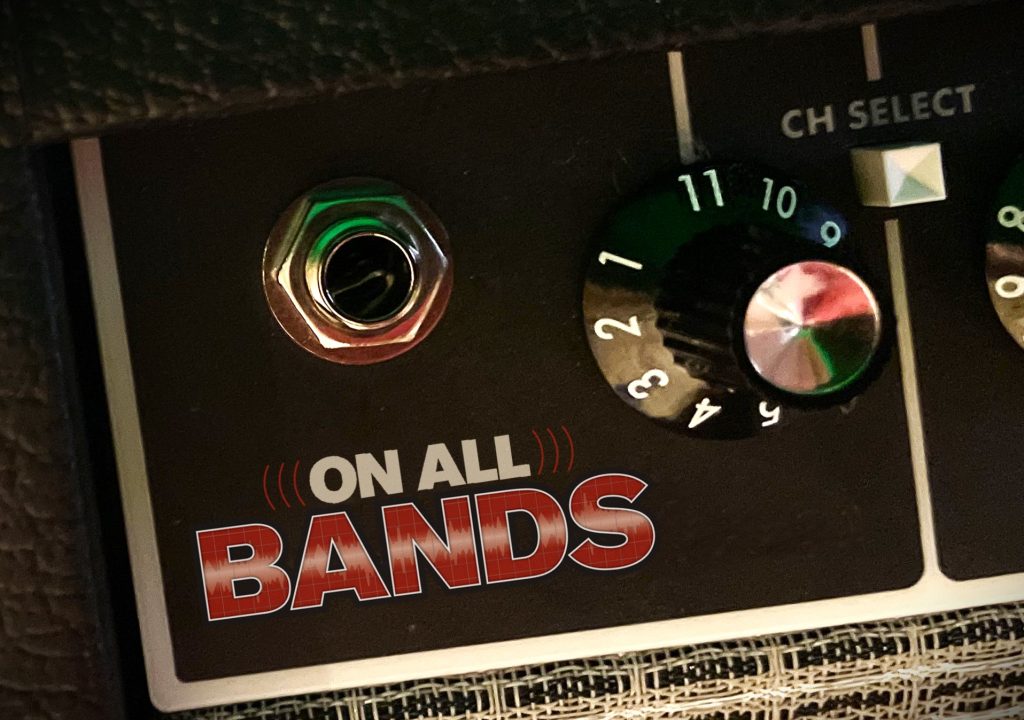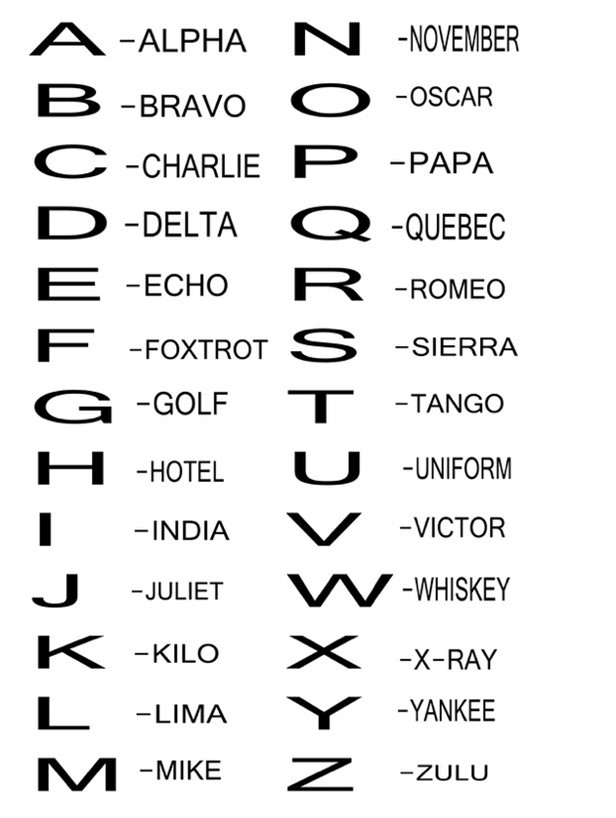A while back while operating a contest, I realized that I was hearing certain types of mistakes made over and over throughout the contest. I thought that it might be useful to share a few of these and offer some suggestions on how to avoid them. Hopefully some of these suggestions will help increase the overall enjoyment level for all participants.
Most of the items discussed below fall under the category of “wasting precious time.” Contests always come down to a race against the clock. Anything done to save time usually helps the contest effort. Anything that wastes time is usually counterproductive. So, without further ado, here are my top-ten rookie mistakes.

#1: Not Listening
The importance of listening cannot be overstated. You’ve got to be able to hear them to work them. If you cannot hear the station you wish to call, how will you know if they come back to you? If you don’t know when they’re listening and are ready for a new QSO, how will you know when to send your call sign? If the station comes back to “W3?” and your call begins with “K4,” then do not transmit. If you are chasing packets spots, do not call until you have verified that you can actually hear the station you are calling. You must verify the call sign at the very least, and that also requires listening. The chances of the spot being busted are high enough that without listening, you may lose not only the QSO but incur additional penalties as well.
#2: Sending Extra Stuff
The most common way to waste precious time is to send extra unnecessary information. Common examples on phone include “please copy” and “thank you very much for the contact.” On CW, the use of the prosign “DE” is typically unnecessary and simply wastes time. Also, the use of “K” or “AR” during the contact is also unnecessary. On RTTY, unnecessary information might include a spelled-out state (instead of the abbreviation) or other “brag file” type comments often seen on the digital modes. Unnecessary shifts between LETTERS and FIGS also take additional time on RTTY (use space instead of a dash.) I can’t think of any situation where it is ever necessary to repeat 59(9). A little extra “DE” may not seem like much, but over the course of a contest, all those little moments add up. The more unnecessary stuff that we can trim from our exchange, the more time we have to make more contacts.
#3: Calling Off-Frequency
In crowded band conditions, it is very important to call stations directly on frequency. When operating S&P on SSB, make sure that the RIT is turned OFF and try to tune stations in so that their voice sounds as natural as possible. On CW, learn how to use your rig’s zero-beat or CW tune function. Learn to train your ears to identify the pitch of your side tone and learn to tune signals to that exact pitch before calling. Once you know how to call exactly zero-beat, you can then learn to offset your transmit frequency up or down just enough to stand out above the crowd. With the Reverse Beacon Network reporting accurate frequencies, too many pileups sound like a continuous tone dead zero-beat. Knowing how to place your transmit signal exactly where you want it can really make a difference. On RTTY, make sure that the AFC is OFF, and use a scope or other accurate tuning indicator to make sure that you are right on frequency before calling a CQing station.
#4: Not Signing Properly
There are few things more frustrating than listening to a running station simply say “QRZed” over and over after each contact, as opposed to properly signing their call. There are situations in which a highly skilled operator can squeeze a few more QSOs out of a high rate hour by signing less often, but that’s not what I’m talking about here. I’m talking about the operator who simply gets lazy and chooses to say “QRZed” at the end of each QSO for minutes on end. In the time it takes to say “QRZed,” the operator could say their call sign, thus giving useful information in the same period of time. Don’t be a QRZed lid. Be sure to sign your call frequently, preferably after every QSO.
#5: Information Sent Out of Sequence
When a station finishes a CQ, the only proper thing to send is your call sign. Don’t send your call sign plus the exchange before the CQing station has even answered you. Send your call, wait for the answer and exchange, then send your exchange. QSOs have a set pattern and rhythm. Try to understand that pattern and follow it with your own QSOs. Likewise, if the exchange is name and state, send name then state in that order. Don’t send the state then name, as it will just confuse the other operator, especially if you are difficult to copy.
#6: Improper or Poor Use of Phonetics
Use phonetics…and use standard phonetics. Don’t say your call without phonetics, as it will usually guarantee a repeat request, wasting time. Say your call sign one time with proper phonetics – that will usually get the job done. A contest is no place for non-standard or “cute” phonetics. “Willie Billie Three Freakishly Advanced Xylophone” is fine for chatting with your buddies, but don’t try that in a contest. Have a second set of phonetics ready (country names work well) in case the standard phonetics are not working for a given QSO. For example, the last letter of my call sign “Oscar” often gets heard as “Alpha.” When that happens, I use “Ontario” or “Ocean” to get the “Oh” across.

#7: Sending the CQing Station’s Call Sign
When calling a CQing station, don’t send the CQing station’s call sign—send only your own. As A1 Op Katashi Nose, KH6IJ (SK) used to say occasionally during his pileups, “I know my call sign, I need to know YOUR call sign.” It is also not usually necessary to send the CQing station’s call sign during the exchange. Exceptions to this rule include the Sprint contests, where both call signs must be sent as part of the exchange. Some operators choose to send the CQing station’s call as part of their exchange in every contest. There is probably an efficiency hit to doing this on every QSO, especially if the frequency is relatively clear. However, in crowded conditions with several stations sharing the same frequency, this technique reduces the chance of logging the wrong station.
#8: Handling Repeats Incorrectly
I could probably write an entire article on how to best handle repeats under different scenarios, but I just will attempt to cover the basics here. First, if you are asked for a repeat, it usually means that you are weak, or otherwise very difficult copy (QRM) on the receiving end. This may appear obvious, but it’s amazing how many operators seem to ignore this simple reality. Just because the CQing station is loud, it doesn’t mean that we are. Because we are weak, it will take extra effort for the other station to copy us. Sending the same thing that didn’t work the first time likely won’t work the second time either. The cardinal rule is to repeat only the missing element, if possible.
For example, if the exchange is RS(T) and serial number, you can be 99% sure that the missing element is the serial number (since all RS(T)’s are typically logged as 59(9).) If asked for a repeat, send ONLY the serial number and repeat it at least twice. Instead of repeating “5NN 123” send “123 123.” Murphy’s Law states that, invariably, if you repeat “5NN 123” the “5NN” always comes through clearly, while the “123” gets taken out by a static crash or QRM from a nearby station. It happens all the time. If asked for your check while operating Sweepstakes, send only your check and repeat it at least once. Don’t send the entire exchange over again. Try very hard to only repeat the missing element and don’t send anything else. Always try to remember that if you are asked for a repeat, it means that you are difficult copy on their end. Make everyone’s life easier by sending only what is necessary to complete the contact.
#9: Correcting a Busted Call
If a station is having difficulty copying your call, or you think that they copied it incorrectly, you want to ensure that the other station has your call sign logged correctly. If a station asks repeatedly for your call sign, it means that they are having a lot of trouble copying you. The best way to let them know if they have it correct is to send “Roger Roger” on SSB or “R R R” on CW. Once they have your call sign correct, it is very important to NOT send your call again. The reason is that if you send your call sign again, it will likely be interpreted as another error correction attempt. If the other station has your call OK, just let them know with a “Roger Roger” and move on. This technique also works for broken exchange elements under very difficult conditions.
#10: Sending the Wrong Exchange
If the exchange is name and state, send name and state. Don’t send your county. Don’t include a signal report if it is not part of the exchange. Be concise and clear. For example, don’t say “QTH is upper peninsula.” Instead, say “Michigan.” Don’t say “central Florida”— just say “Florida.” Any extra information simply wastes precious time and often results in an unnecessary repeat request, wasting more time.
Bonus! #11: Bad Audio
Wait, I thought this was a top-ten list? Well, I could not leave out one of the most obvious ways to tell the world that you are a poor operator. That is to use over-driven, badly distorted audio. Do NOT just crank everything up to “11” and let ‘er rip (watch below).
Spend some time studying audio and the effects of compression levels. Get with a trusted friend on the air and make some honest evaluations. Use recordings to gain a better understanding. Most of all, do not abandon all that you’ve learned when contest time comes around. Taking up half of 20 meters with splatter will not earn you any respect in the contesting world.
That’s all for this time folks. Have a safe and fun Contesting Season, and I’ll see you in the pileups. As always, please feel free to write with any questions or comments.
73, Kirk K4RO

